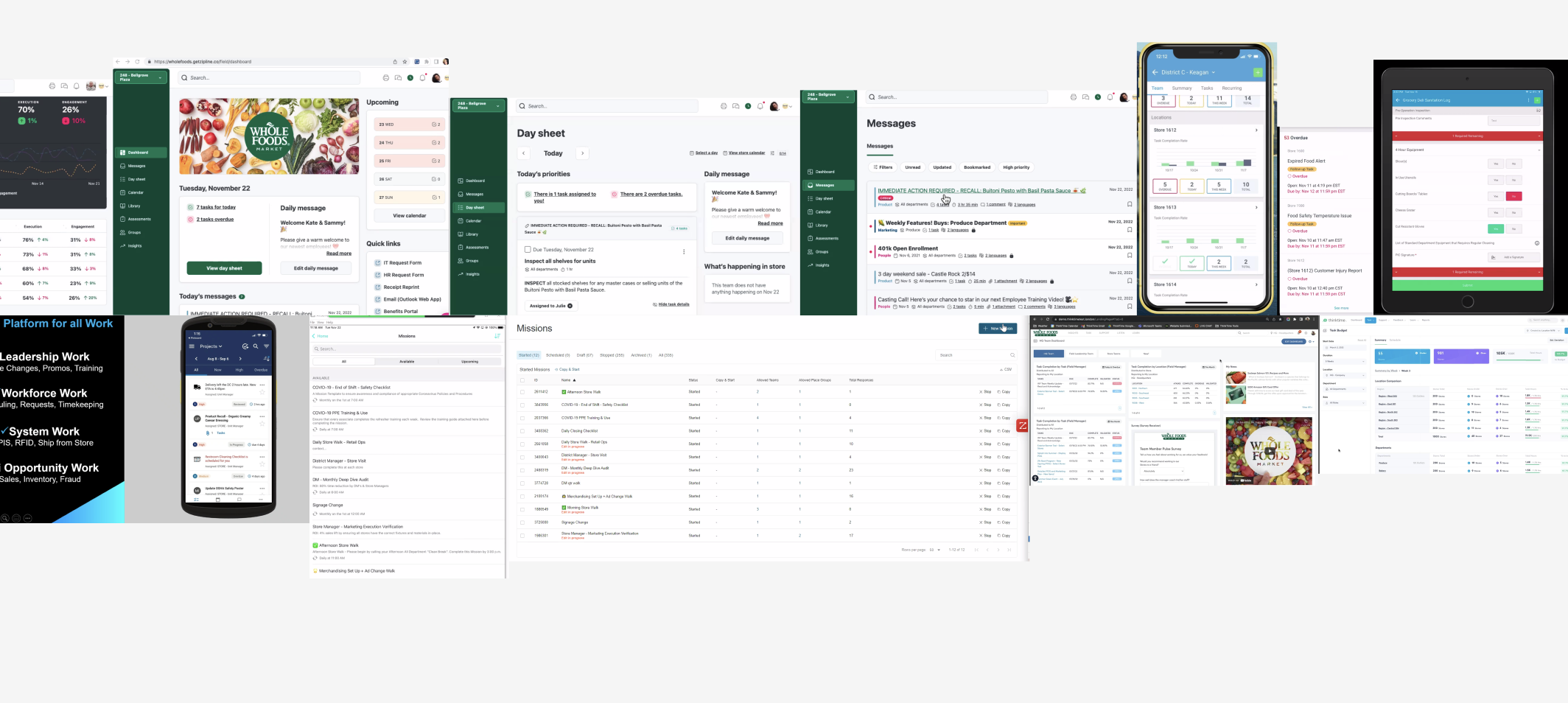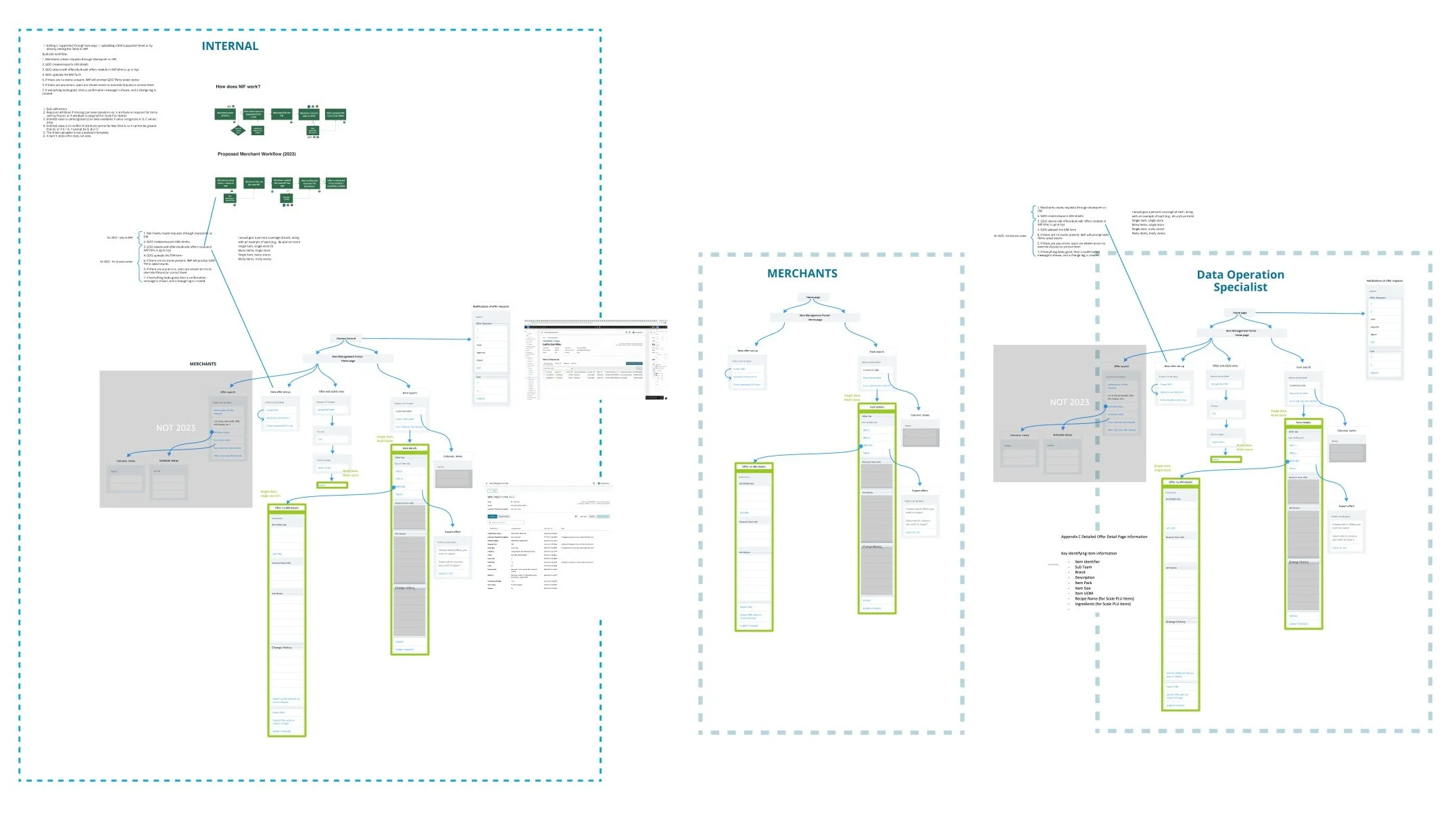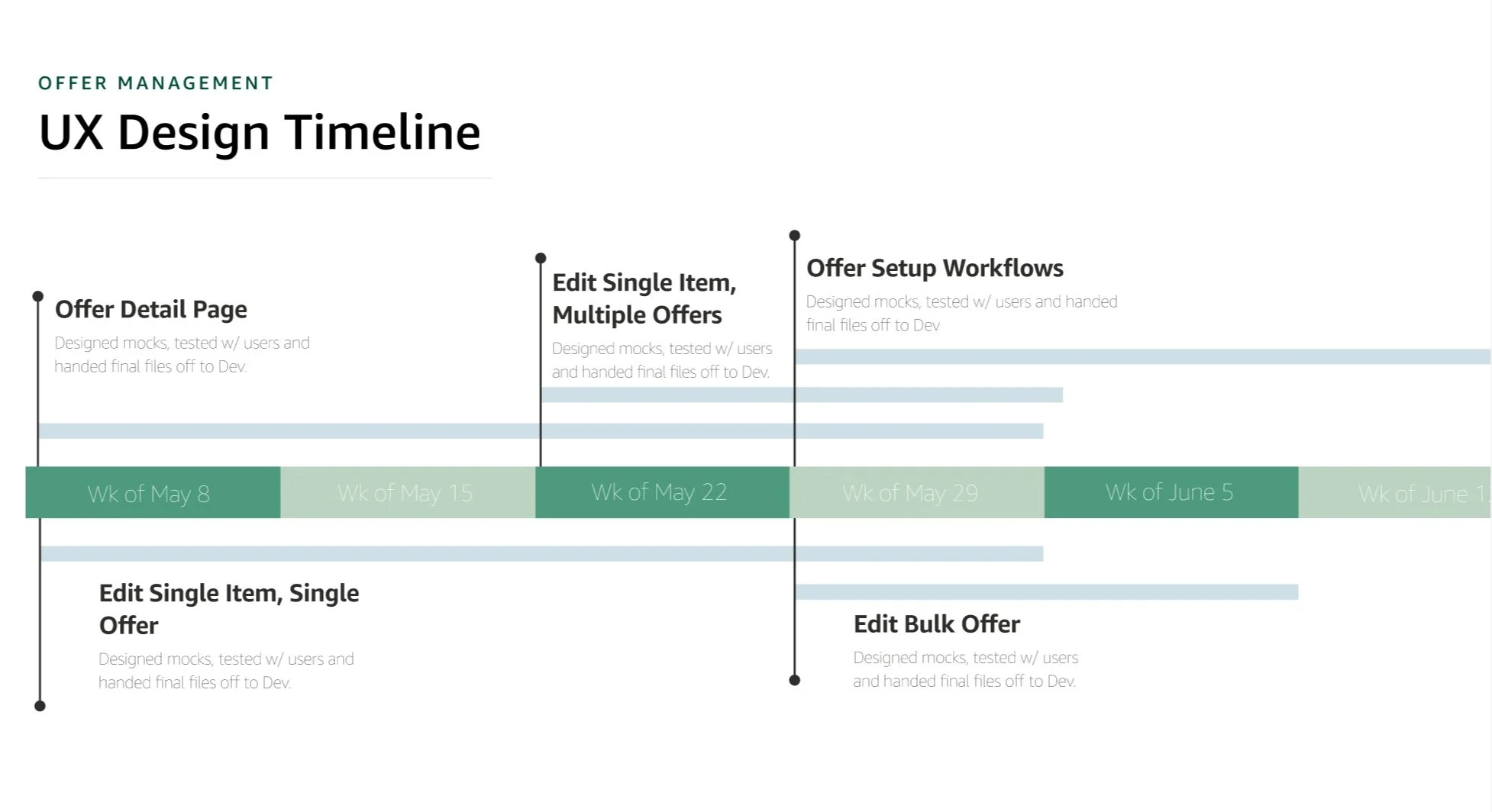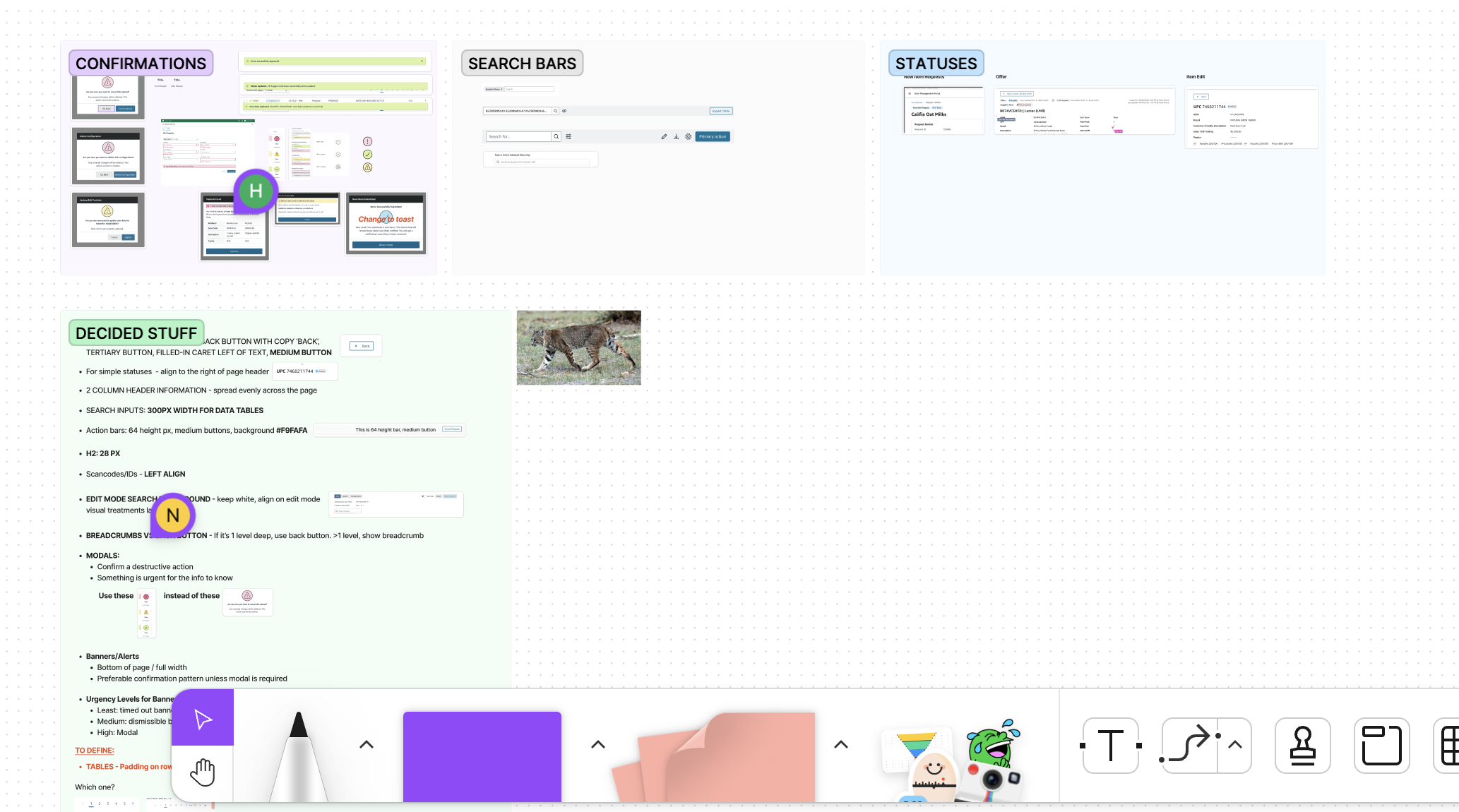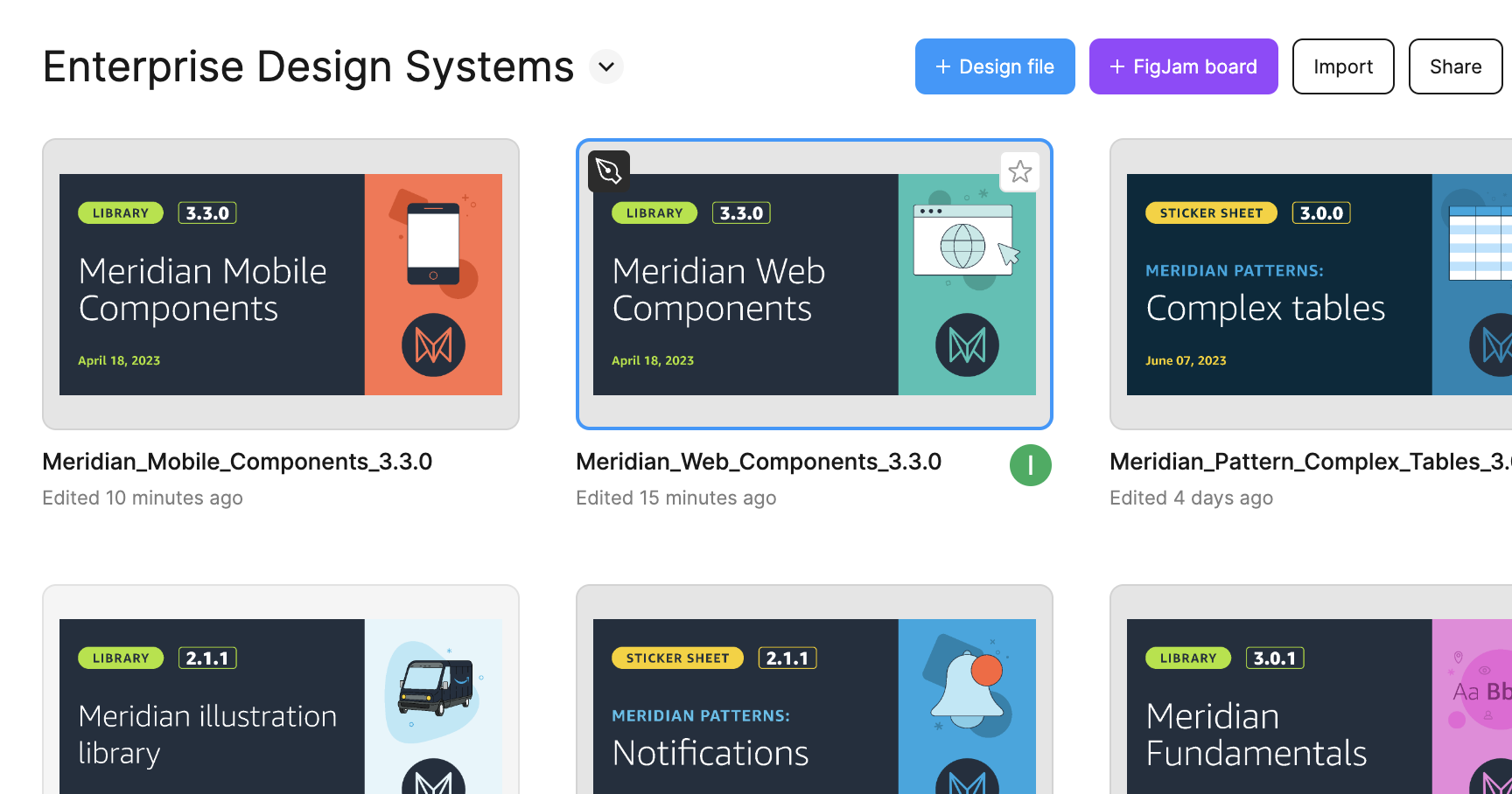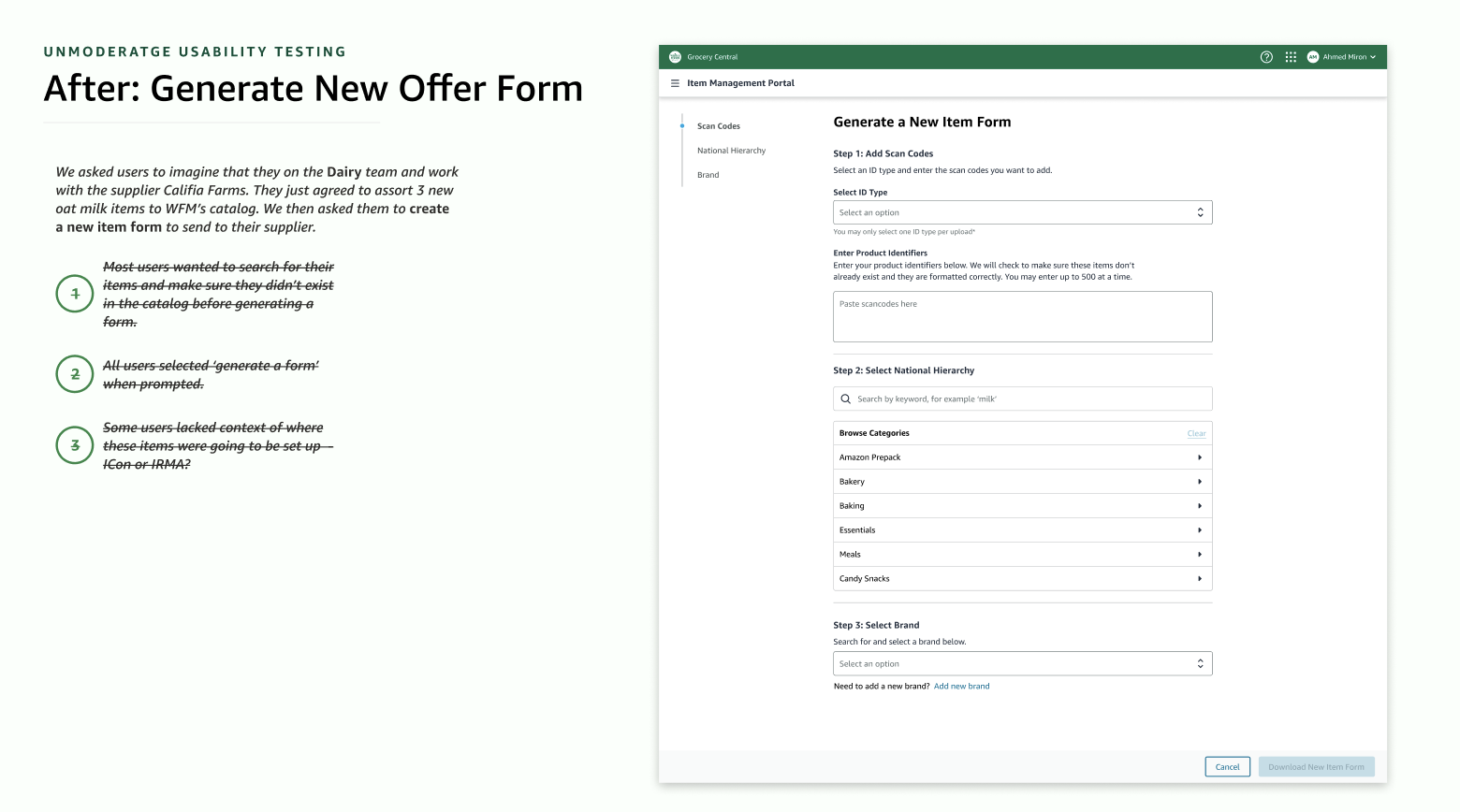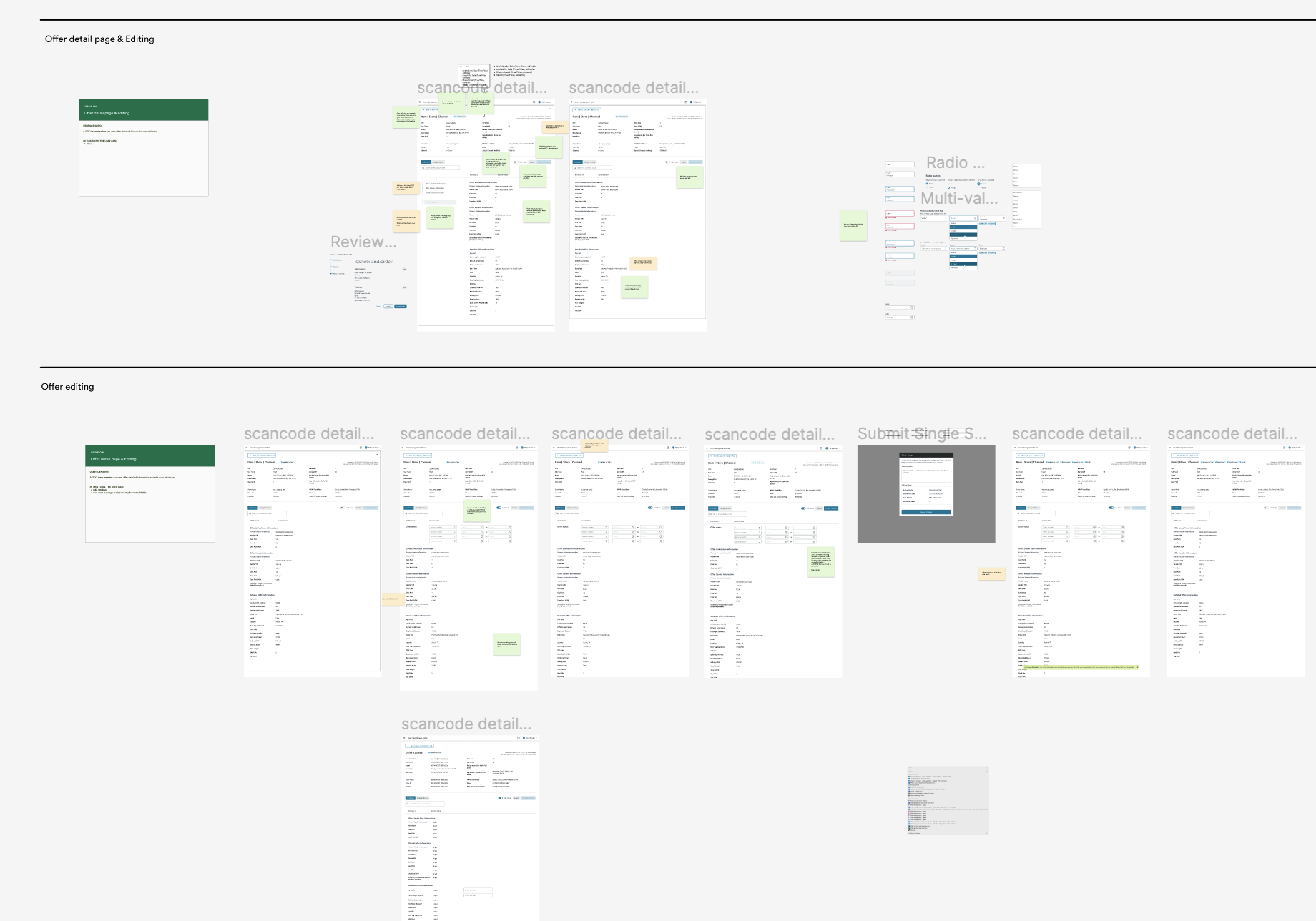
Company
Whole Foods Market is a leading natural and organic grocery retailer, known for its commitment to quality, sustainability, and customer experience across hundreds of stores worldwide.
My Mandate
Design tools that simplify grocery data management for suppliers, improving efficiency and accuracy across product information workflows.
Project: Grocery Data Management
Whole Foods Market’s grocery offer data was scattered across more than 10 disconnected platforms — from Excel and Smartsheet to legacy tools like ICon and SNIP. This fragmentation caused errors, slowed decision-making, and drained resources.
The Grocery Data Management platform replaced these disparate tools with a single source of truth. Built for Global Data Operations (GDO), Category Merchants, and Senior Merchants, it enabled in-depth filtering, richer metadata management, and far fewer input errors — all while reducing reliance on email, Teams, and spreadsheets.
Problem: What’s not working
Managing grocery offer data was complex, time-consuming, and error-prone. The impact:
Data discrepancies: Information inconsistencies between systems eroded trust.
Inefficient workflows: Category managers and procurement teams spent up to 20 hours/week reconciling data.
Higher costs and delays: Redundant steps slowed decisions and strained supplier relationships.
Approach: How the solution took shape
1. User Research
To ground the solution in real needs, I began with extensive field research. Over several weeks, I met with 15 Category Managers, 3 Procurement team members, and 20 suppliers — observing how they currently uploaded, edited, and approved grocery offer data.
Methods used: contextual inquiries, workflow shadowing, structured interviews, and surveys.
Key finding: Category Managers and Procurement teams were spending up to 20 hours/week reconciling data scattered across more than 10 tools — a major operational bottleneck.
Key insight: Accuracy and speed mattered most, but users were willing to sacrifice feature depth if it meant fewer touchpoints and cleaner data.
2. Competitive Analysis
To benchmark our vision, I reviewed leading supplier data management platforms, mapping their feature sets, workflows, and adoption strategies.
Learned that integrated platforms reduced discrepancies by up to 60% and boosted operational efficiency by ~30%.
Identified best-in-class filtering, metadata management, and permissions models that could inform our MVP.
3. Information Architecture & Workflow Design
I mapped the current state: 10+ tools, multiple logins, redundant approvals, and no single source of truth. From there, I developed a future-state information architecture with:
Clear, role-based navigation for GDO, Category Merchants, and Senior Merchants.
Consolidated workflows that automated data validation and reduced double entry.
Early wireflows tested with users, showing a 40% reduction in time for core tasks like offer submission and approval.
4. Design System Workshops & Adoption
Recognizing the complexity of multiple teams, I initiated joint workshops with Whole Foods Market and Amazon designers.
Established shared UX patterns and UI components.
Aligned on adopting Amazon’s Meridian Design System for scalability and consistency across both brands.
This decision allowed our platform to plug seamlessly into Amazon’s ecosystem while retaining Whole Foods’ distinct brand identity.
5. High Fidelity Designs
Once wireframes were validated, I moved to high-fidelity prototypes in Figma.
Blended Whole Foods’ brand guidelines with functional needs of Grocery Data Management.
Focused on visual hierarchy to guide users through dense data tables without cognitive overload.
Designed responsive layouts for both desktop and handheld devices, ensuring flexibility for in-store and remote workflows.
6. Collaboration & Alignment
Kept stakeholders engaged throughout — from GDO Leads to Procurement Analysts.
Ran bi-weekly design reviews to capture feedback early.
Co-created edge-case scenarios with Engineering to prevent data loss and ensure offline compatibility.
7. Development & Implementation
Partnered closely with Engineering during agile sprints.
Delivered annotated design specs and micro-interaction documentation.
Participated in QA to ensure fidelity between design and build.
Iterated on UI polish post-launch based on live user feedback.
Delivered annotated design specs and micro-interaction documentation.
Participated in QA to ensure fidelity between design and build.
Iterated on UI polish post-launch based on live user feedback.
Results & Impact
The launch of Grocery Data Management turned a fragmented, manual process into a fully self-service, automated experience — accessible on both desktop and handheld devices. The result was faster workflows, cleaner data, and stronger collaboration between Whole Foods Market teams and suppliers.
Streamlined workflows: Reduced offer submission, review, and approval time by 40%, enabling faster decisions and improving supplier relationships.
Improved accuracy: Centralized data reduced discrepancies caused by 10+ fragmented systems.
Faster collaboration: Automated processes freed category managers and procurement teams to focus on higher-value work.

